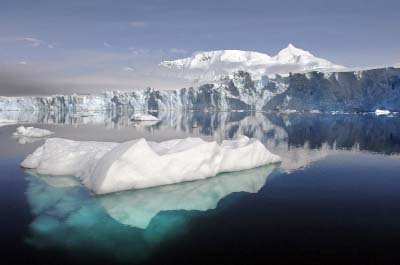
AFP, Miami :Sea levels are rising around the world, and the latest satellite data suggests that three feet (one meter) or more is unavoidable in the next 100-200 years, NASA scientists said Wednesday.Ice sheets in Greenland and Antarctica are melting faster than ever, and oceans are warming and expanding much more rapidly than they have in years past.Rising seas will have “profound impacts” around the world, said Michael Freilich, director of NASA’s Earth Science Division.”More than 150 million people, most of them in Asia, live within one meter of present sea level,” he said.Low-lying US states such as Florida are at risk of disappearing, as are some of the world’s major cities such as Singapore and Tokyo. “It may entirely eliminate some Pacific island nations,” he said.There is no doubt that global coastlines will look very different in years to come, US space agency experts told reporters on a conference call to discuss the latest data on sea level rise.”Right now we have committed to probably more than three feet (one meter) of sea level rise, just based on the warming we have had so far,” said Steve Nerem of the University of Colorado, Boulder and leader of NASA’s sea level rise team.”It will very likely get worse in the future,” he told reporters. “The biggest uncertainty is predicting how quickly the polar ice sheets will melt.”The last major predictions were made in 2013 by the United Nations Intergovernmental Panel on Climate Change (IPCC). Based on a consensus of international researchers, the IPCC said global sea levels would likely rise from one to three feet by the end of the century.Nerem said the latest satellite data suggests the higher end of that range is more likely.NASA’s predictions are based on a series of altimeters that measure ocean height from space. NASA and French space agency CNES began launching satellites to measure sea level in 1992.”The instruments are so sensitive that if they were mounted on a commercial jetliner flying at 40,000 feet (1,200 meters) they could detect the bump caused by a dime lying flat on the ground,” Freilich said.The world’s oceans have risen an average of almost three inches (7.6 cm) since 1992, with some locations rising more than nine inches (23 cm) due to natural variation, according to these instruments, known as Topex/Poseidon, and its successors, Jason-1 and Jason-2, NASA said.Much of the extra water is coming from melting ice and glaciers. Scientists are particularly concerned about the Greenland ice sheet, which shed an average of 303 gigatons of ice a year over the past decade.Also, the Antarctic ice sheet has lost an average of 118 gigatons a year.”One of the things we have learned is that the ice sheets are melting faster than we had previously suspected,” said Josh Willis, oceanographer at NASA’s Jet Propulsion Laboratory in Pasadena, California.

